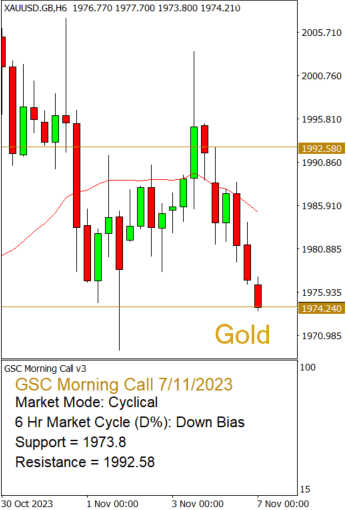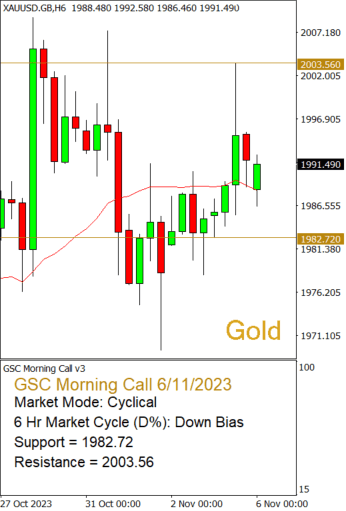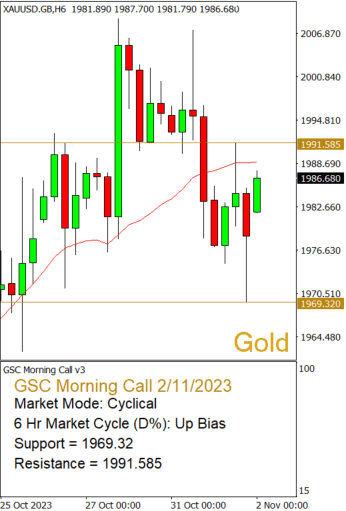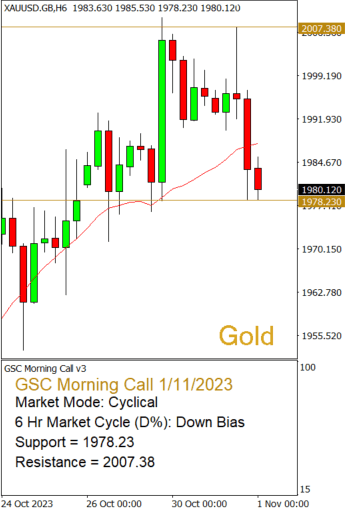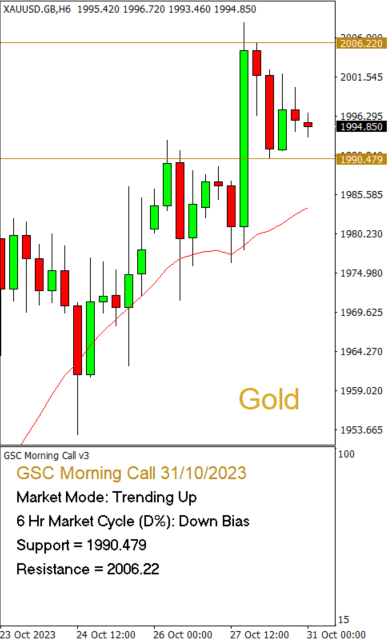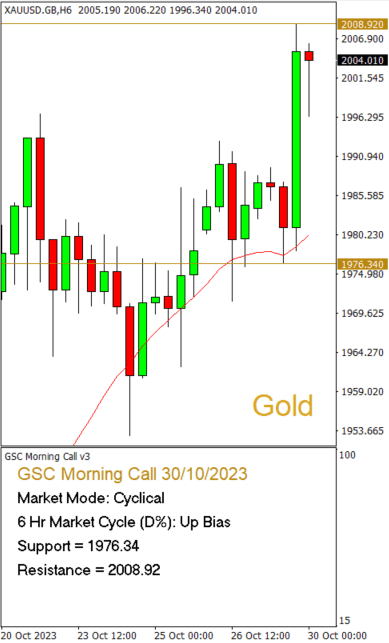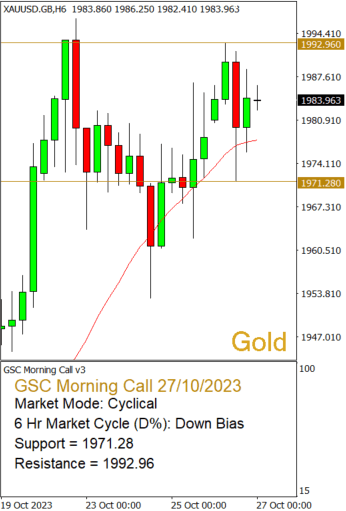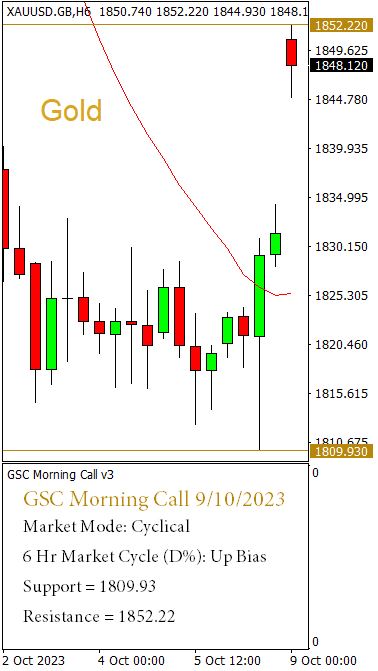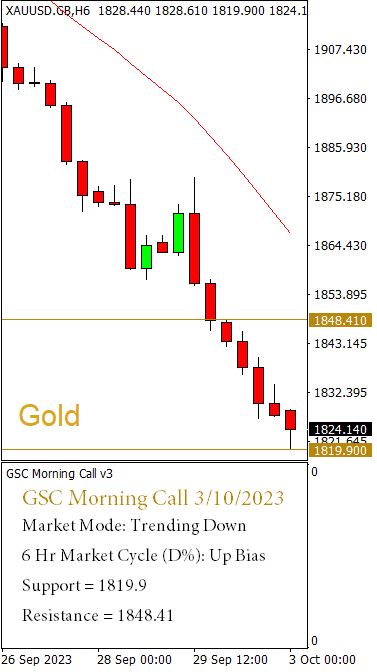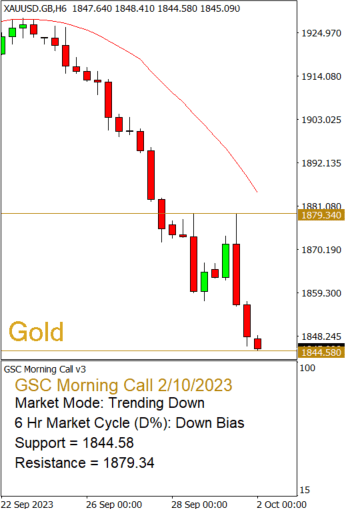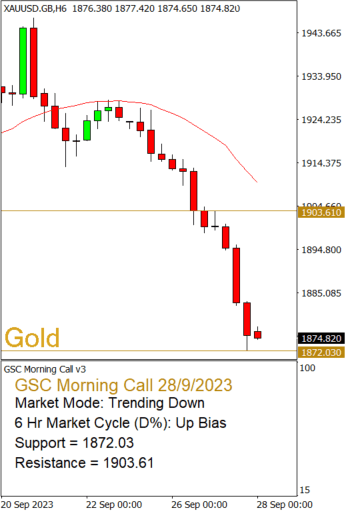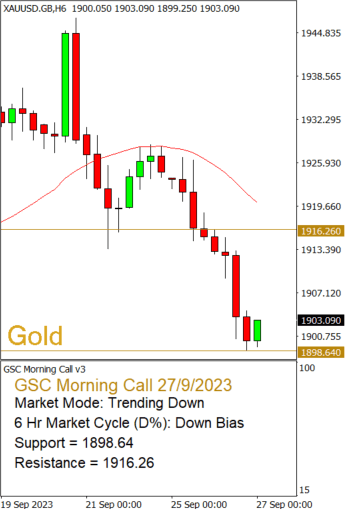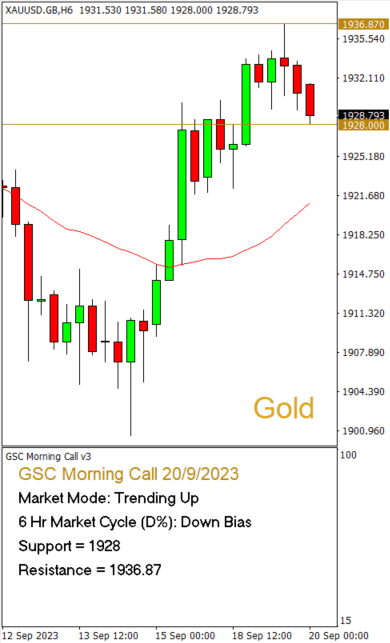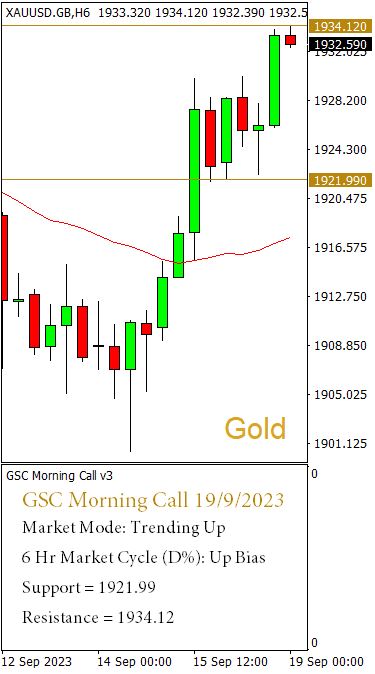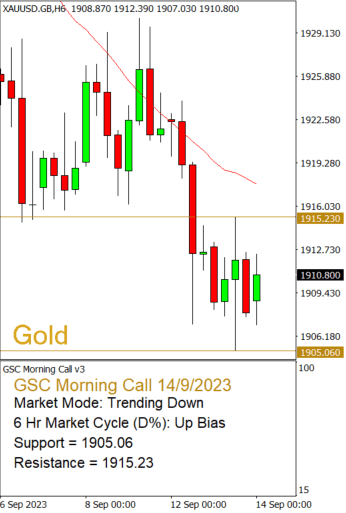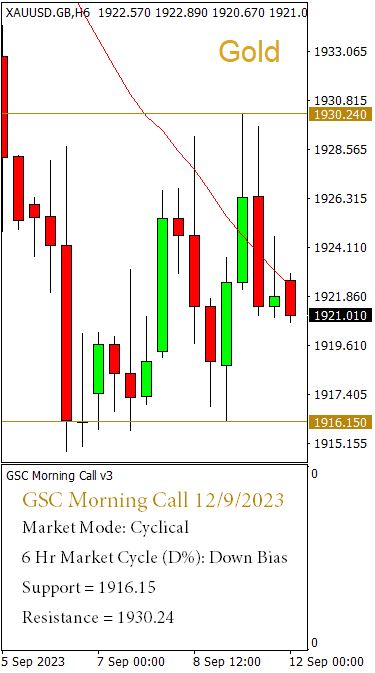Gold Outlook for Q4 2023 (Update)
Our system has turned bullish for Q4 2023, indicating that Gold has ended its cyclical downtrend last week and is now expected to move higher over this quarter. The bears have stepped aside, and the bulls have taken control of the Gold market. The bulls may be attempting to retest the strength of supply at US$2,000/oz level, which they failed to breach on last Friday.
Please feel free to contact us if you require additional information or have any further questions regarding our Q4 outlook for precious metals. We are always here to assist you. Happy trading!
Gold prices fell by 3.65% or $70 during Q3, which was consistent with our Q3 projection. For Q4 2023, our system suggests that Gold remains on a cyclical downtrend. The bears are still in control and may be attempting to test the strength of demand at US$1,804.10/oz level, which is the current 2023 year low for Gold.
During Q3, Silver prices fell by 2.55% or $0.58, which was also in line with our Q3 projection. For Q4 2023, our system shows that Silver prices will be range-bound but skewed to the downside. The bears have set their next target at US$19.85/oz, which is the current year low for Silver in 2023.
Our system suggests that if the precious metals market continues to decline this quarter, Silver may underperform Gold and fall more.
Platinum prices ended Q3 with a small gain of $4.40 or 0.49%, despite our system forecasting a drop for Q3. For Q4 2023, our system projects that Platinum prices will continue to trade sideways within the US$880/oz and US$990/oz price level.
Please feel free to contact us if you require additional information or have any further questions regarding our Q4 outlook for precious metals. We are always here to assist you. Happy trading!


